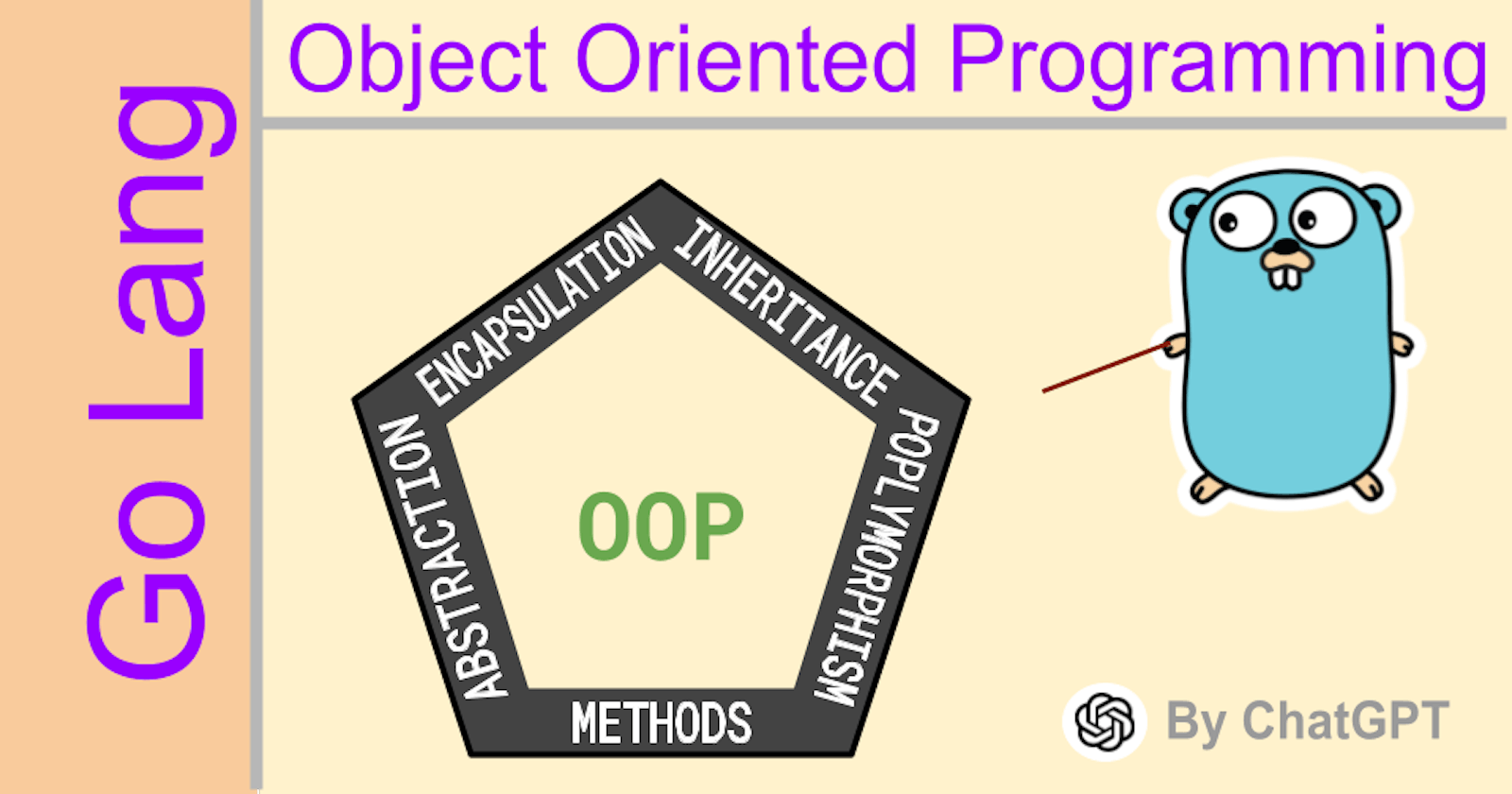Object-oriented programming (OOP) is a programming paradigm based on the concept of "objects", which can contain data and code that operates on that data. In Go language, OOP is achieved using the concepts of struct and interface types.
Implementation
Go is not a purely object-oriented programming language like Java or C++, but it supports some of the features of object-oriented programming (OOP), such as structs, methods, and interfaces. Here are some advantages of using OOP features in Go:
Modularity: OOP allows for better modularity and code organization. By encapsulating data and behavior in objects, you can create modular and reusable code that can be easily maintained and extended.
Polymorphism: Go's interfaces provide a way to achieve polymorphism. By defining an interface that specifies a set of methods, you can write code that works with any type that implements that interface. This allows for more flexible and generic code.
Code reusability: OOP allows for code reuse through inheritance and composition. In Go, you can define types that embed other types to reuse their functionality. This helps to reduce code duplication and makes your code more efficient.
Abstraction: OOP allows you to abstract away the implementation details of an object and provide a simplified view of its behavior to the user. This makes your code more user-friendly and easier to understand.
Testability: OOP makes it easier to write testable code by encapsulating functionality in objects. By unit testing individual objects, you can ensure that they work as intended, which makes it easier to identify and fix bugs.
Principles
Here are the four main principles of OOP and how they can be implemented in Go language:
1. Encapsulation
Encapsulation is the process of hiding an object's internal state and methods from the outside world, and restricting access to only a set of public methods. In Go, this can be achieved by defining a struct with private fields and exporting only the necessary methods that can access and modify those fields.
package main
type employee struct {
firstName, lastName string
age int
salary float64
}
func (e *employee) setSalary(sal float64) {
e.salary = sal
}
func (e *employee) getSalary() float64 {
return e.salary
}
func main() {
emp := employee{"Bob", "Smith", 25, 50000.00}
emp.setSalary(55000.00)
fmt.Println("New Salary is:", emp.getSalary())
}
In this example, we define a struct employee with private fields firstName, lastName, age, and salary. We then define methods setSalary() and getSalary() which can be used to modify and retrieve the salary of an employee instance respectively.
2. Inheritance
Inheritance is the process by which one class (subclass) inherits the properties (methods and fields) of another (superclass). In Go, this can be achieved by creating a new struct type that embeds another struct type.
package main
type person struct {
name string
age int
}
type student struct {
person // embedding the person struct type
major string
}
func main() {
s := student{}
s.name = "Bob"
s.age = 25
s.major = "Computer Science"
fmt.Println(s)
}
In this example, we define a struct person with fields name and age and a struct student that embeds the person struct type. This means that the student struct type inherits the fields and methods of the person struct type. We then create a new student instance and populate its fields.
3. Polymorphism
Polymorphism is the ability of an object to take on many forms. In Go, this can be achieved by creating interfaces with different methods that can be implemented by multiple structs.
package main
type shape interface {
area() float64
}
type rectangle struct {
height, width float64
}
type circle struct {
radius float64
}
func (r rectangle) area() float64 {
return r.height * r.width
}
func (c circle) area() float64 {
return math.Pi * c.radius * c.radius
}
func main() {
r := rectangle{10.0, 20.0}
c := circle{5.0}
shapes := []shape{r, c}
for _, s := range shapes {
fmt.Println(s.area())
}
}
In this example, we define an interface shape that has a single method area(). We then define two structs, rectangle and circle, and implement the area() method for each of them. Finally, we create a slice of shape interface type and populate it with instances of rectangle and circle. We then loop through the slice and call the area() method on each shape instance, which polymorphically computes the area of the shape regardless of its underlying type.
4. Abstraction
Abstraction is the process of hiding the implementation details and only showing the essential features of an object to the outside world. In Go, this can be achieved by creating interfaces with abstract methods that are implemented by multiple structs.
package main
type animal interface {
speak() string
}
type dog struct {
name string
}
func (d dog) speak() string {
return "Woof! My name is " + d.name
}
type cat struct {
name string
}
func (c cat) speak() string {
return "Meow! My name is " + c.name
}
func main() {
a := animal(dog{"Fido"})
b := animal(cat{"Fluffy"})
fmt.Println(a.speak())
fmt.Println(b.speak())
}
In this example, we define an interface animal with an abstract method speak(). We then define two structs, dog and cat, and implement the speak() method for each of them. Finally, we create instances of dog and cat and convert them to animal interface type. We then call the speak() method on each animal instance, which abstractly executes the speech behavior of the animal without exposing its underlying implementation details.
Conclusion
In conclusion, while Go is not a traditional OOP language, it supports some of the key features of OOP, which can be used to create more modular, reusable, and flexible code.
Disclaim: Done with ChatGPT. Learn and prosper 🖖🏼🍀

